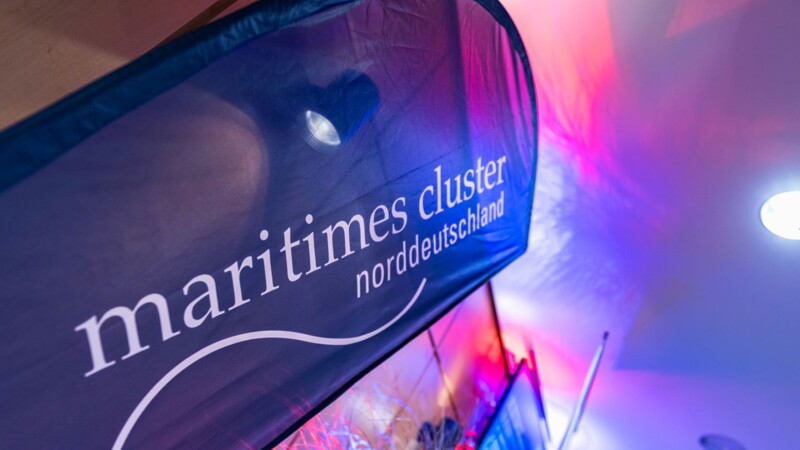The German Ministry for the Environment is now putting EUR 100 million towards the "Immediate Action Scheme for Munitions Contamination in the North Sea and Baltic Seas”. "This will tackle an enormous problem," said Dieter Guldin, Managing Director of SeaTerra, which specializes in locating, identifying and removing munitions on land and at sea. "If we loaded 1.6 million tonnes of munitions onto a freight train, it would stretch from Berlin to Paris." SeaTerrra has branches in Wandlitz near Berlin and in Seevetal in the Hamburg Metropolitan Region, and is usually in demand before the construction of offshore wind turbines or laying submarine cables. "The German government is investing EUR 100 million in environmental protection. This has never happened before." Yet, it is high time, according to Guldin. "We have to act now while the ammunition is still intact enough to be recovered."
Pilot project to salvage abandoned ammunition in Bay of Lübeck
A total of 1.6 million tonnes of decommissioned weapons, including bombs, grenades and artillery and machine gun ammunition lie at the bottom of the Baltic and North Seas. When World War I and World War II ended, all these weapons were taken from German and Allied arsenals by the barge load and dumped in the Bay of Lübeck as part of German disarmament. All these discarded weapons have serious consequences, as the metal shells and casings of bombs and cartridges corrode and release explosives. Carcinogens and mutagens end up in the water and in the food chain - in fish and mussels and eventually on our plates.
Enough to fill a freight train from Berlin to Paris
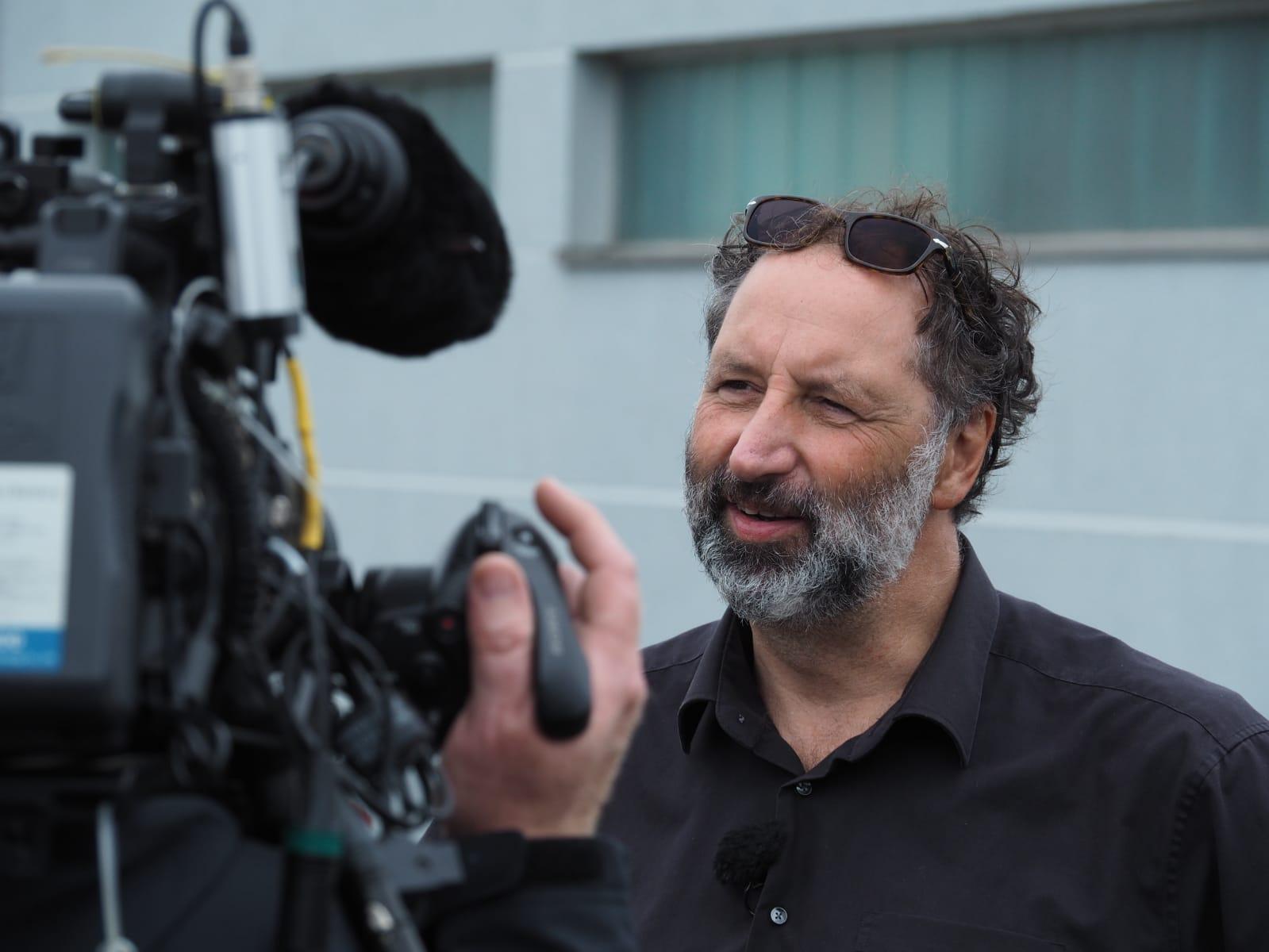
Goal robot-assisted procedure
The ministry has also commissioned the Hamburg-based companies Eggers Kampfmittelbergung and Hansataucher with recovering 50 tonnes of munitions from the Bay of Lübeck as part of a pilot project co-ordinated by Seascape GmbH. The company in Hamburg plans and executes large-scale projects. "The pilot project consists of two phases. During the first phase, various technologies will be used to recover different types of munitions. This should provide information on how to clear them efficiently. The second phase will involve developing and constructing a floating industrial facility to dispose of the recovered munitions safely and in an environment-friendly manner," said Guldin. An automated, robotic process is the only viable solution given the huge amount of war debris. "Ultimately, we need an approach that allows us to salvage and dispose of munitions on an industrial scale 24/7." The experience gained from this pilot project should lead to a safe, overall concept for working on the high seas.
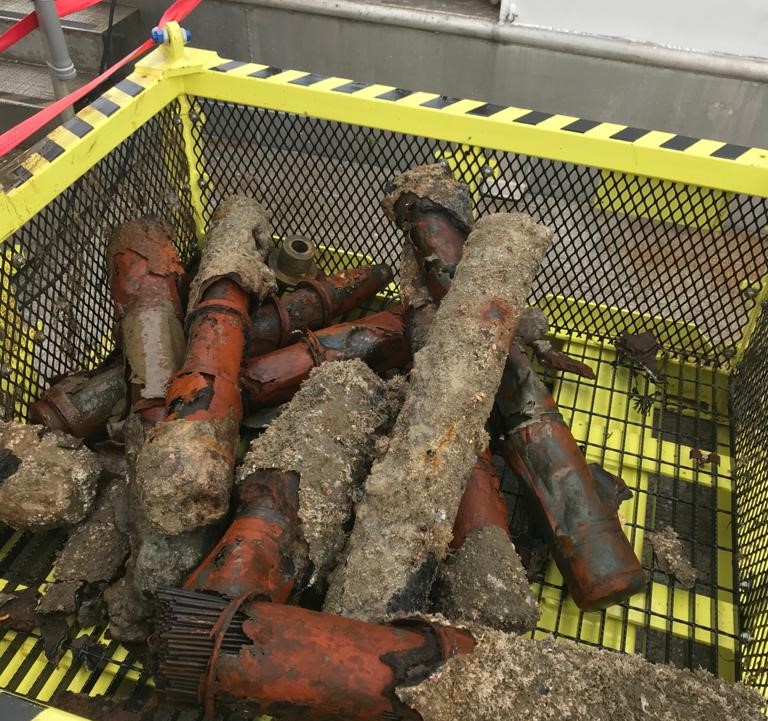
Special salvaging technology
As part of the pilot project, SeaTerra is responsible for recovering piles of ammunition from the seabed, as well as boxes of unidentified ammunition. "First we scan the area using magnetometers to collect data," said Guldin. Once the area has been surveyed, three ships equipped with special technology, usually developed by Guldin and his team, are deployed to clear the site. A vessel equipped with Dynamic Positioning (DP), also known as Dynamic Positioning System (DPS), acts as the main starting point for the salvage operation. Vessels with DPS can hold a position without anchoring or mooring thanks to a computer-controlled system for automatic positioning.

Grippers, crawlers and divers
"From this starting point, we lower a camera and gripper system as well as a diving team to identify any ammunition that can be handled safely and can be put into baskets." A grenade, e.g., is safe to handle unlike a bomb, which may have an easily activated fuse. Around 95 per cent of the arms are safe to handle and can be picked up by the gripper. "The gripper is suspended from a crane and is brought into an optimum gripping position. The contact pressure can be adjusted - from five to 250 kilos - to gently lift the various objects into the basket without causing an explosion." Achieving such sensitivity was a real challenge, Guldin stressed. The gripper is supported by a remote-controlled underwater robot or crawler, which examines the seabed and collects small objects such as bullets.
The finds are sorted and documented aboard the other ships. "We draw up a data sheet for every recovered object," said Guldin. "Most of the recovered ammunition is brought ashore for destruction and handed over to the Society for the Disposal of Chemical Warfare Agents and Legacy Armaments (GEKA)." The remainder is taken to a so-called wet storage facility for disposal.
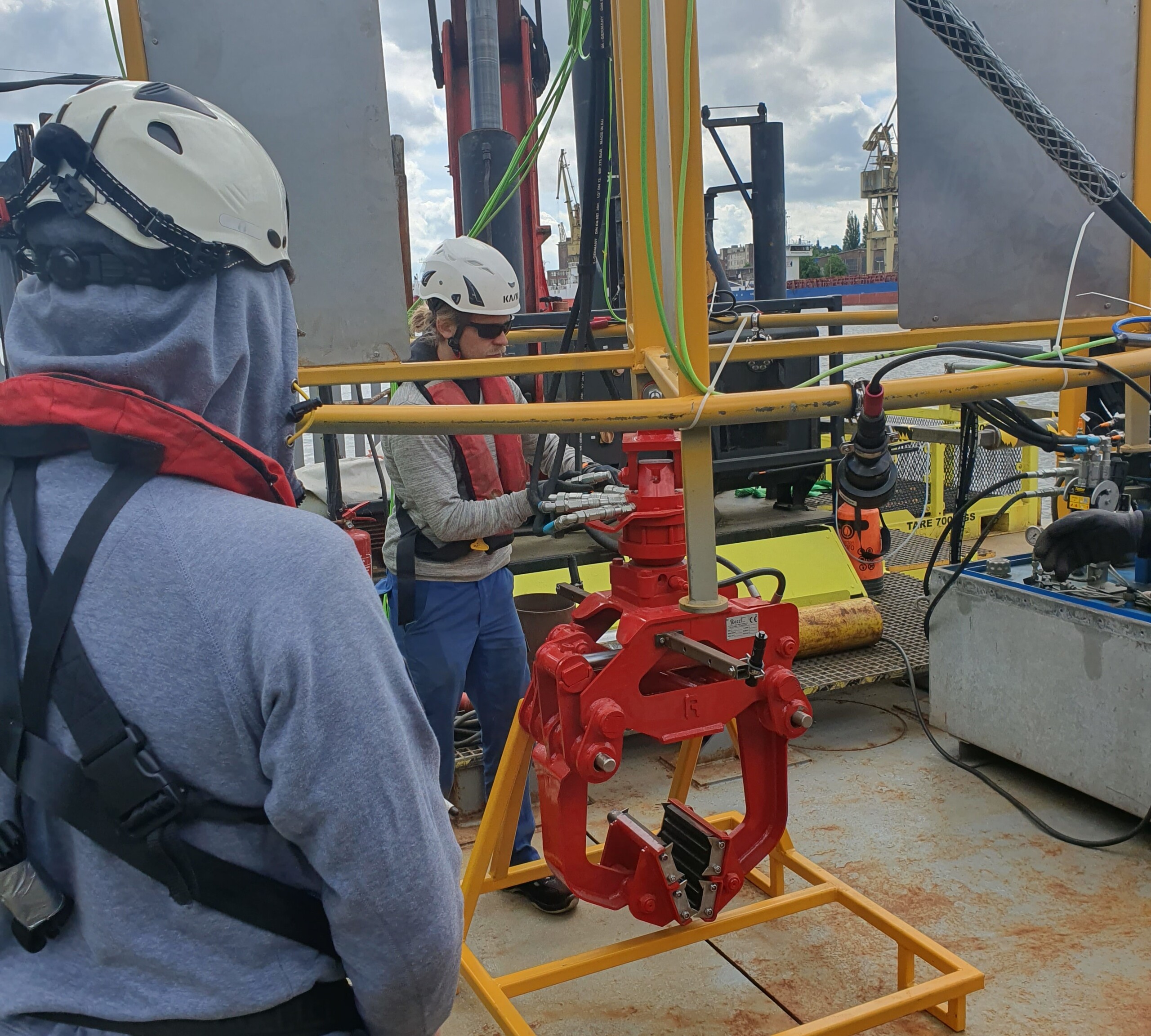
SeaTerra operating in bay and urban area
This challenging pilot salvage operation is all about safety, environmental protection, technological innovation and documentation…anything but an everyday task for SeaTerra. It usually focuses, for instance, on major construction projects as nearly all of them involve "suspected explosive ordnance sites". "Regardless of whether a school, day-care centre or supermarket is to be built, the first thing to do is to ensure that there are no explosives in the ground." And there is plenty, Guldin said.. "Both the city of Hamburg and the port were heavily bombed during the war.. No wonder there are still plenty of explosives decades later." The Port of Hamburg is difficult to probe, Guldin stressed, as "the water is deep, murky and there is a strong current." SeaTerra has developed special sounding ships and uses drones for shore areas, embankments and dry sandy areas. Remotely operated underwater vehicles (ROVs) and divers are used in the water. The SeaTerra team consists mainly of explosive ordnance disposal experts, known as fireworkers, who are trained to handle munitions safely, as well as geophysicists, divers, ROV pilots, marine surveyors and software developers. "We also have someone on the team with a PhD in chemistry, and I'm an archaeologist," said Guldin. They are all driven by a passion to make the world a little safer. The pilot project in the Bay of Lübeck in the Hamburg Metropolitan Region is a big step towards this noble objective. "We are taking a a unique approach that has never been tried anywhere else in the world. This is a real quantum leap.”
ys/kk/pb
Sources and further information
More
Similar articles
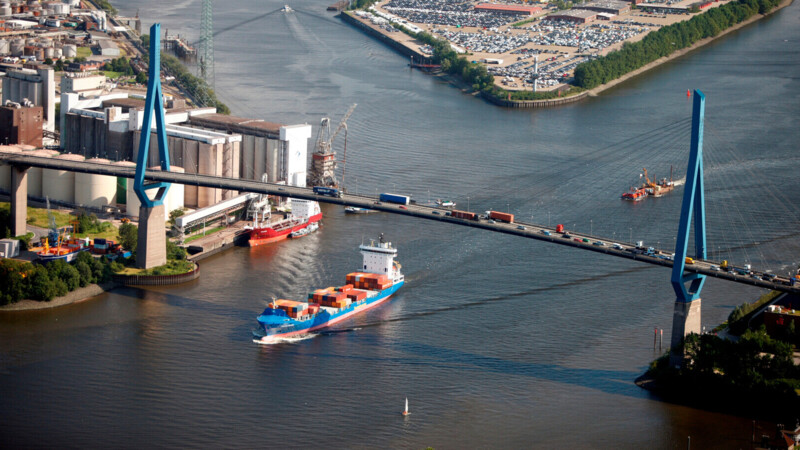
Upswing in maritime sector
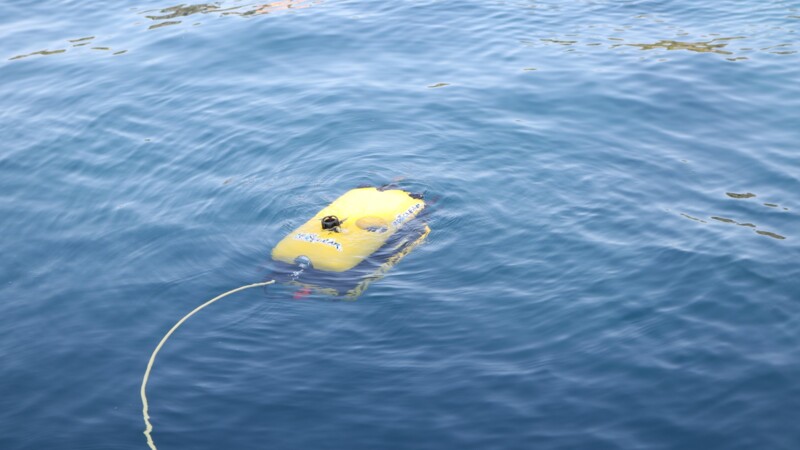
SeaClear 2.0 to focus on cleaning sea surfaces
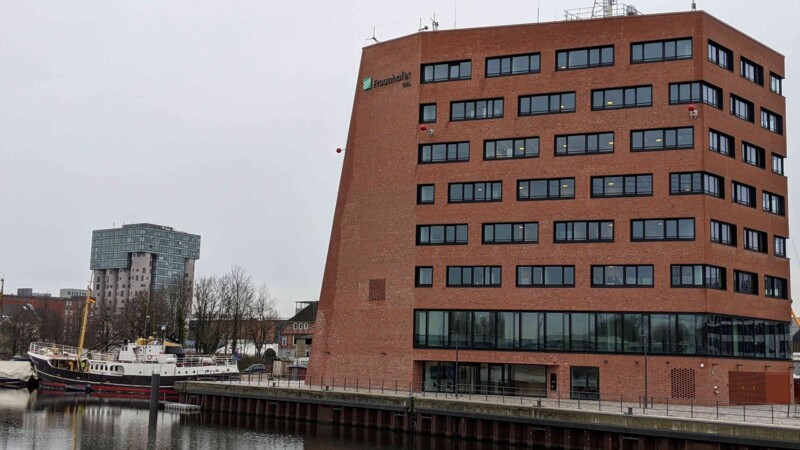
Fraunhofer CML coming up with novel solutions for maritime sector
